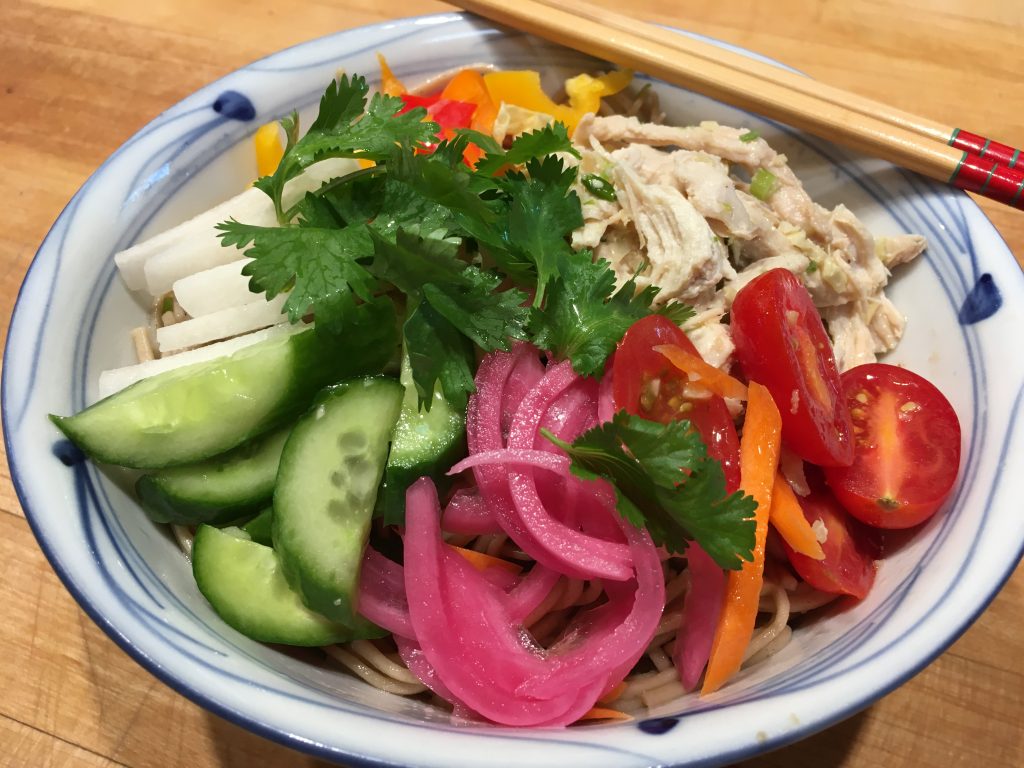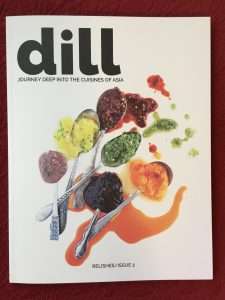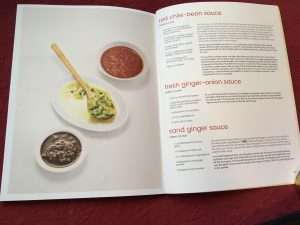
Many Hakka dishes have the reputation for being heavy, fatty, dark, and salty. This new Hakka Noodle Bowl, defies that stereotype. I combined the two easiest and shortest recipes in The Hakka Cookbook, to create a zesty, colorful, noodle bowl that appeals to today’s taste for lighter, healthier food.
Start with Steeped Chicken Breasts (page 22 of The Hakka Cookbook). The lean chicken gently cooks in the residual heat of boiling water. Cool and tear the moist meat into coarse shreds. You can also use leftover cooked chicken or meat from a purchased rotisserie bird.
The zesty Fresh Ginger-Onion Sauce (page 66) brightly seasons the chicken and noodles. This sauce combines lots of fresh minced fresh ginger, green onion, and garlic. Pour boiling hot oil over the mixture to lightly temper the pungency. The sauce is often served with salt-baked, steamed, or poached chicken, but I find it also adds a vibrant lively flavor to noodles, seafood, and vegetables.
Cook your noodle of choice–I like Chinese wheat noodles or soba. Mix noodles with the ginger sauce and soy sauce to taste. Place in large bowls. Top noodles with mounds of cooked shredded chicken and slivered vegetables. Offer extra ginger sauce to add to taste. Enjoy–you will love this fresh, light noodle bowl.
Hakka Ginger Chicken Noodle Bowl
You can scale this recipe up or down. The chicken and sauce can be prepared a day ahead, cover and chill. Use leftover Ginger-Onion Sauce on salads, noodles, seafood, and vegetables.
Makes 2 or 3 main dish servings
6 ounces dry Chinese wheat noodles or Japanese soba
Fresh Ginger-Onion Sauce (page 66 of The Hakka Cookbook, makes about 3/4 cup)
Soy sauce
1 1/2 to 2 cups coarsely shredded cooked chicken (Steeped Chicken Breasts, page 22 of The Hakka Cookbook)
Salt to taste
2 to 3 cups slivered or thinly sliced vegetables such as cucumbers, carrots, jicama, radishes, cherry tomatoes, cabbage, red bell pepper, red onion (choose 3 to 6)
Cilantro leaves for garnish
Chile sauce (optional)
1. Cook noodles in boiling water as directed on package. Drain and rinse well with cold water. Drain.
2. In a large bowl mix noodles with 3 to 4 tablespoons Ginger-Onion Sauce and 2 to 3 tablespoons soy sauce, or to taste. Place noodles in 2 or 3 large serving bowls.
3. Mix chicken with about 3 tablespoons Ginger-Onion Sauce, 2 to 3 teaspoons soy sauce, and salt to taste. Mound equal portions of chicken on each bowl of noodles. Arrange mounds of vegetables on noodles. Drizzle vegetables with a little of the Ginger-Onion Sauce, offer remaining sauce to add to taste. Garnish bowls with cilantro. If desired, offer chile sauce and soy sauce to add to taste. Mix lightly to eat.


